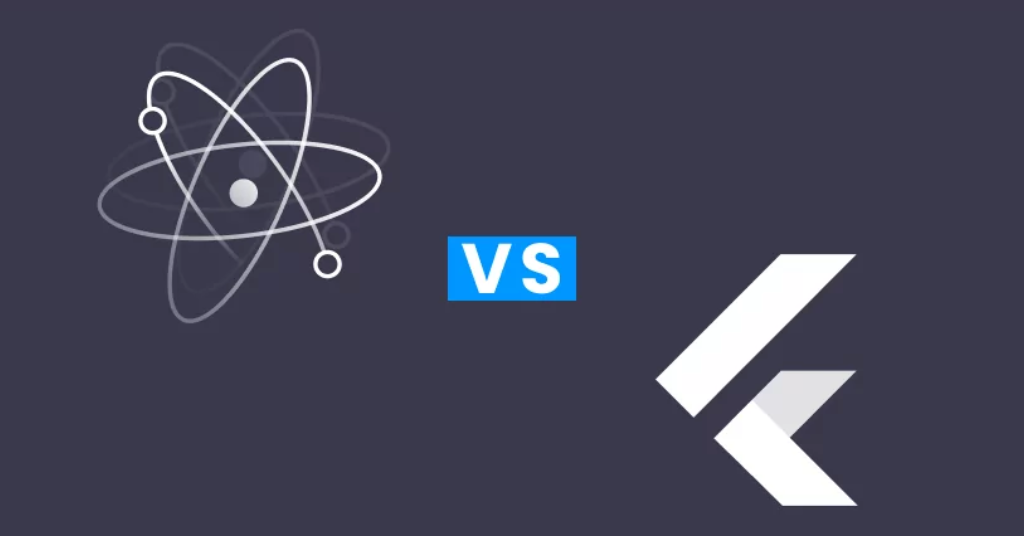
React Native Vs Flutter – Which One is Better in 2024?
With so many cross-platform mobile app development frameworks available, it’s not surprising to see developers struggling to decide which one to use. Between React Native vs Flutter, there are plenty of pros and cons to consider when making the decision. React Native and Flutter are two of the most popular cross-platform mobile app development frameworks today. If you’re currently trying to decide which one is a better choice for your project, this blog post will help you understand their similarities and differences. In other words, read on to learn everything you need to know about React Native vs Flutter!
WHAT IS REACT NATIVE?
React Native is a cross-platform mobile app development framework that uses React’s design concepts and developer tools. It allows developers to create apps with a native look and feel while being able to code in JavaScript. React Native’s main goal is to allow developers to build apps that perform the same on all operating systems. This is achieved by rendering the app using a JavaScript engine in the browser and then compiling it to a native app for each OS. This allows you to use the same code for both web and mobile apps, making the development process faster and easier.
WHAT IS FLUTTER?
Flutter is Google’s mobile app development framework that lets you create apps for Android and iOS using a single codebase. It’s a cross-platform solution that uses a combination of widgets, graphics, and code to create beautiful and high-quality apps. Flutter’s main goal is to bring the benefits of reactive programming to the UI layer. In particular, it incorporates the concept of a “single-threaded application”, which means that all UI operations are done within a single thread. However, reactivity is used for updating the UI when a new data source becomes available. Flutter also supports hot reloading, which means that you can see your code changes reflected in app on the fly.
KEY DIFFERENCES BETWEEN REACT NATIVE AND FLUTTER
There are many similarities between React Native and Flutter, but there are also a few key differences. These can help you decide which framework is right for your project. Let’s break them down now. -
Language -
First of all, you should decide which language is most suitable for your project. If you already have a team of developers who know JavaScript well, then React Native is the best fit. However, if you would like to hire Android engineers who know the language, then Flutter is your best bet. -
UI –
Secondly, you should think about how your app’s UI will look. React Native allows you to create apps that look native to each platform. However, Flutter gives you full control over the UI design. -
Dependencies -
Last but not least, you should consider your dependencies. The first generation of React Native required a lot of dependencies to be installed before being able to use it. However, the second generation of React Native allows you to choose what dependencies you want to install. -
Development Time -
Last but not least, you should think about how long it will take to develop your app. React Native is a bit faster than Flutter, but Flutter allows you to push code updates on the fly, which is great.
PROS OF REACT NATIVE
One of the biggest pros of using React Native is that it’s easier to hire developers. If your business is planning to hire engineers for your app, you will find it easier to hire JavaScript developers. You also don’t need to hire iOS developers if you’re creating an iOS app. React Native is also a more cost-effective solution. You don’t have to hire separate teams for web and mobile development, and you don’t need to invest in developing different apps for different platforms. You also don’t have to worry about app cross-compatibility. You can easily update your app. If you want to make changes to your app, you can do it quickly and easily. You don’t have to deal with the hassle of updating your app on different platforms.
PROS OF FLUTTER
One of the biggest pros of using Flutter is that developing an app is much quicker. You don’t have to write as much code, and you can even see your changes in real-time. This is a huge plus for developers, as it means that they don’t have to spend as much time on each app update. Flutter is also cross-platform by nature. You can create apps for both Android and iOS using a single codebase. This is a huge benefit, as it means that you don’t need to hire separate teams for each platform. Last but not least, Flutter is easy to learn. You can learn the basics of the framework in just a few hours, regardless of your current skill level. Furthermore, the community behind Flutter is huge, meaning that you can easily find help and support whenever you need it.
CONS OF REACT NATIVE
One of the biggest cons of using React Native is that it’s more difficult to hire developers. If your business is planning to hire engineers for your app, you will find it harder to hire JavaScript developers. React Native is also a more costly solution. You will have to hire separate teams for web and mobile development and you have to invest in developing different apps for different platforms. You also have to worry about app cross-compatibility. Another con is that it’s harder to update your app. If you want to make changes to your app, you have to go through a complex process and update it on different platforms. This takes more time and effort, which means that you have to plan further in advance.
CONS OF FLUTTER
One of the biggest cons of using Flutter is that it’s a bit harder to hire engineers. If your business is hiring engineers for your app, you will find it harder to find people who know both Android and iOS Mobile App development. Flutter is also a more costly solution. You will have to hire separate teams for web and mobile development and you have to invest in developing different apps for different platforms. You also have to worry about app cross-compatibility. Another con is that it’s harder to update your app. If you want to make changes to your app, you have to make changes on two different platforms. This takes more time and effort, which means that you have to plan further in advance.
CONCLUSION
As you can see, there are many similarities between React Native and Flutter. These two frameworks are great for creating cross-platform apps and are useful for many different types of businesses. However, when it comes to choosing which one is better, there is no clear winner. This decision comes down to your individual needs and requirements. If you’re still trying to decide between these two frameworks, here are a few things that you should keep in mind. First, make sure that your team is familiar with JavaScript and React. If not, then React Native is a great option. Second, if you want more control over your UI and design, then Flutter is the way to go. /END> Keep in mind that these are general guidelines and not strict rules. You might come across a scenario where React Native is a better solution than Flutter or vice versa. No matter which framework you decide to use, make sure you pick one that is flexible and scalable enough to grow with your project. This way, you can rest assured that your app will continue to perform well even as your business grows and changes over time.




